- Découvrez les collections
- Notice d'oeuvre



Paris, 1676 ; Paris, 1763
H. 50 cm ; l. 69 cm (sans cadre) ; H. 69 cm ; l. 88,5 cm (avec cadre)
M0536_L.I.38
Europe est la fille d’Agénor, roi des Phéniciens ("L’Iliade", Homère). Zeus, tombé amoureux de cette belle mortelle, se métamorphose en taureau pour la séduire et la jeune femme, conquise, grimpe sur son dos. La mer et les coquillages au premier plan évoquent la suite du récit, puisque quelques instants plus tard Zeus fend les flots et enlève Europe jusqu’en Crète. Trois fils naîtront de leur union : Minos, Rhadamanthe et Sarpédon. Sébastien II Le Clerc s’inscrit dans le courant baroque, avec son dessin sensuel, ses coloris doux et frais, l’impression de vie et de mouvement qui se dégage de la scène. Le putto muni d’une torche enflammée est un personnage fréquent dans les scènes libertines de l’époque, il symbolise peut-être ici la passion charnelle : il tire le taureau vers l’horizon, comme pour presser Zeus d’accomplir son dessein. Plusieurs variantes de cette œuvre sont connues, notamment la gravure "Enlèvement d’Europe" par Edme Jeaurat (1688-1738) d’après Sébastien II Le Clerc, datée de 1714. Cette gravure permet de dater approximativement l’œuvre conservée au Musée départemental.
Europa was the daughter of Agenor, King of the Phoenicians (Iliad, Homer). Zeus, fell in love with this beautiful mortal and transformed himself into a bull to seduce her. The young woman acquiesced and mounted his back. The sea and seashells in the foreground hint at the next stage in the story, as a few moments later Zeus cleaves through the waves and bears Europa off to Crete. They had three sons: Minos, Rhadamanthus and Sarpedon. Sébastien II Le Clerc belonged to the Baroque movement with his sensual drawing style, soft fresh colours and the feeling of life and movement which the scene exudes. The figure of a putto bearing a flaming torch frequently features in libertine scenes of the era and in this case possibly symbolises carnal passion. He is leading the bull towards the horizon as if he is urging Zeus to carry out his plan. There are several known variants of this work, notably "The Rape of Europa" by Edme Jeaurat (1688-1738) after Sébastien II Le Clerc, dated 1714. This engraving makes it possible to attribute an approximate date to the work in the Musée départemental.
Europa was the daughter of Agenor, King of the Phoenicians (Iliad, Homer). Zeus, fell in love with this beautiful mortal and transformed himself into a bull to seduce her. The young woman acquiesced and mounted his back. The sea and seashells in the foreground hint at the next stage in the story, as a few moments later Zeus cleaves through the waves and bears Europa off to Crete. They had three sons: Minos, Rhadamanthus and Sarpedon. Sébastien II Le Clerc belonged to the Baroque movement with his sensual drawing style, soft fresh colours and the feeling of life and movement which the scene exudes. The figure of a putto bearing a flaming torch frequently features in libertine scenes of the era and in this case possibly symbolises carnal passion. He is leading the bull towards the horizon as if he is urging Zeus to carry out his plan. There are several known variants of this work, notably "The Rape of Europa" by Edme Jeaurat (1688-1738) after Sébastien II Le Clerc, dated 1714. This engraving makes it possible to attribute an approximate date to the work in the Musée départemental.
"Les Métamorphoses d’Ovide" regorgent de ruses employées par les dieux pour assouvir leur désir envers des mortels ou des dieux. Jupiter est celui qui recourt le plus abondamment à ce subterfuge : il se change en cygne pour approcher Léda, en aigle pour emmener Ganymède sur l’Olympe, en taureau immaculé pour enlever Europe ; il prend l’apparence de Diane pour aborder Callisto, et devient même pluie d’or ou nuée pour féconder Danaé et Io. Il change ensuite en génisse cette dernière, qui est l’aïeule d’Europe, pour la faire échapper, en vain, à la colère de Junon.
"Ovid’s Metamorphoses" abound with ruses employed by the gods to satisfy their desires for mortals or deities. Jupiter resorts to this subterfuge more often than anyone else: he turns himself into a swan to get close to Leda, an eagle to take Ganymede to Olympus, and a pure white bull in order to abduct Europa; he takes on the appearance of Diana in order to approach Callisto, and even becomes a golden shower or a cloud in order to make Danaë and Io pregnant. He then turns the latter, who is an ancestor of Europa, into a heifer in an unsuccessful attempt to protect her from Juno’s anger.
"Ovid’s Metamorphoses" abound with ruses employed by the gods to satisfy their desires for mortals or deities. Jupiter resorts to this subterfuge more often than anyone else: he turns himself into a swan to get close to Leda, an eagle to take Ganymede to Olympus, and a pure white bull in order to abduct Europa; he takes on the appearance of Diana in order to approach Callisto, and even becomes a golden shower or a cloud in order to make Danaë and Io pregnant. He then turns the latter, who is an ancestor of Europa, into a heifer in an unsuccessful attempt to protect her from Juno’s anger.

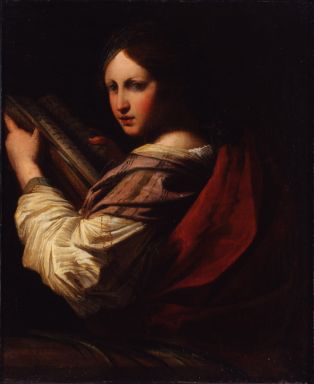
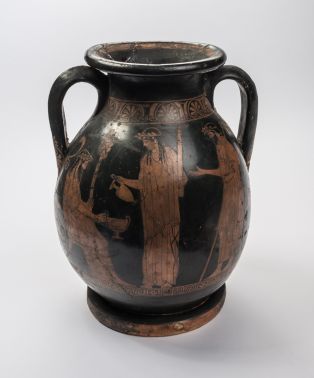
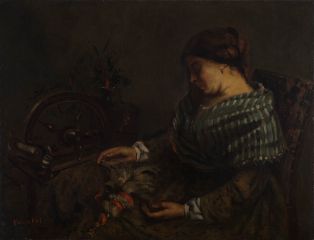
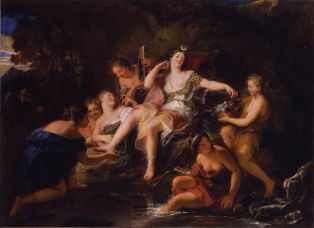
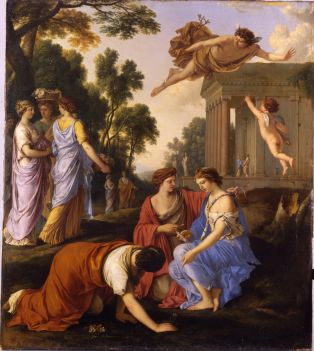
 Copyright© WebMuseo 2017 - 2024
Copyright© WebMuseo 2017 - 2024